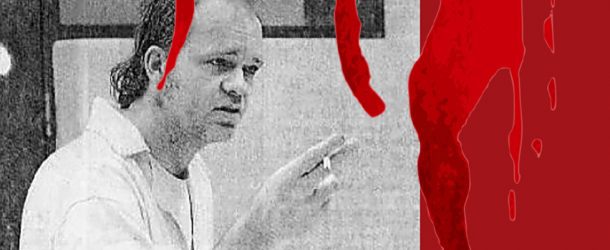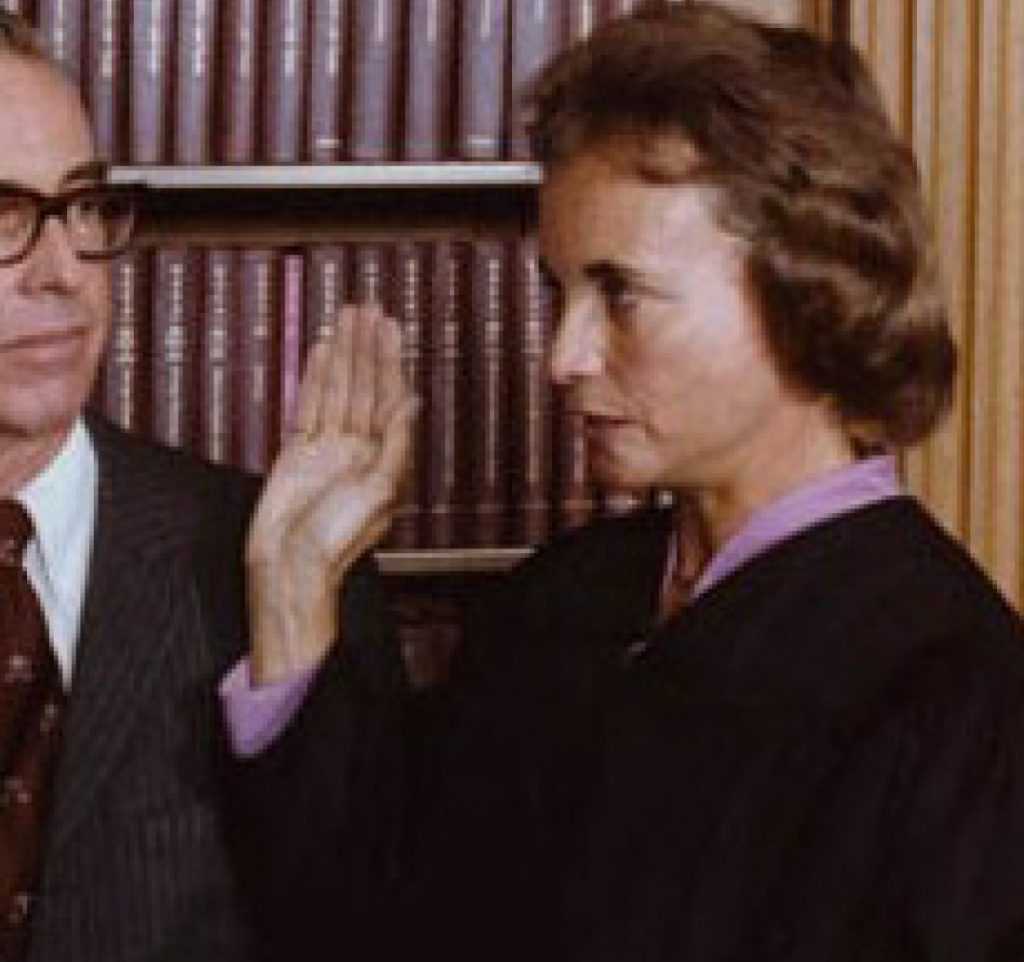A Lake Arthur Killer Has A Long History Of Mental Illness
By Brad Goins
Sunday July 17, 1983, was a very bad day for Lake Arthur, La. The trouble began at 9:30 am, when Michael Owen Perry walked into the home of his two cousins — 22-year-old Bryan LeBlanc and 19-year-old Randy Perry. He shot each one in the face with a shotgun. Death came quickly.

When his relatives came inside, Perry first tried to take out his father, 48-year-old Chester, by using the same shotgun blast to the face he’d used with his cous-ins. But Chester managed to hide behind a television set before his son could get the shot off. He grabbed the shotgun Perry was holding in an attempt to wrest it away from the assailant. The father did well enough to break the shotgun apart. But Michael still managed to get off a shot and killed his progenitor.
Michael then shot his mother as she tried to escape through a side door. She made it outside before she collapsed. Michael dragged her back in and closed the door.
At this point, it must have been an easy matter for Michael to shoot his 2-year-old nephew. He used the same M.O. — one shot directly to the face. Now almost all of his relatives were dead; the only living relative was a sister who was, at the time, institutionalized for men-tal illness, just as Michael had been in the past.
Having killed everybody in his family he could, Michael felt he was free to make the escape to Washington, D.C., that he’d apparently been planning for some time. Police investigation revealed that during the course of the shootings, the murderer had used two shotguns and two pistols. As was stated above, all the wounds were made at close range. The coroner stated that the damage to the vic-tims was so severe it wasn’t always possible to tell how many entrance wounds there were.
Perry quickly became the main, and then the only, suspect. When police searched Perry’s trailer, they found what appeared to be a list of people he want-ed to kill written on the back of a blank check. The list included the relatives whose lives he’d ended and the names of some celebrities. The word “sky” was written next to the name of each person he’d killed. What was most curious was the heading Perry had written above the list — “The Ten Commandments.”
The problem was, no one knew where Perry was. It would be more than three weeks until FBI agents finally tracked him to a hotel room in D.C. As police gathered evidence in Perry’s hotel room, they found anoth-er list that indicated Perry intended to murder singer Olivia Newton John and U.S. Supreme Court Justice Sandra Day O’Connor. He’d come to D.C. to get O’Connor. (One of the doctors who later examined Perry was told by the killer “no woman should ever be above a man.”) Investigation also revealed that Perry had written the names of the five people he’d just killed in Lake Arthur on the side of his hotel TV set.
THE POSSIBILITY OF AN INSANITY DEFENSE
When Perry was returned to Louisiana to stand trial, he followed in the footsteps of the large number of murder suspects who have resisted their attorney’s efforts to present an insanity defense. Like many, he may not have liked to think of himself as insane. As his attorney had promised, when Perry entered a plea of “not guilty,” he immediately made himself vulnerable to the death penalty. When it came to the possibility of an insanity defense, Perry had more going for him than many defendants do. He had a long history of confinement in the Central State Hospital in Pineville, La., for mental illness.
As part of his defense, Michael claimed he had killed his parents be-cause he was mad at them for having him committed. And he allegedly told prison guards that he had killed his 2-year-old nephew because he was “evil: some kind of demon. A witch of some sort. He was a very smart kid — too smart for his age.” A claim like that no doubt led many to think that Perry had been unwise in choosing to avoid the insanity defense. His bizarre behavior in court would also lead those following the case to question his sanity. Perry crafted headbands out of napkins and sometimes wore these headbands to court. He often showed up in court barefoot or wearing dirty clothing. When he did wear shoes or socks to court, he sometimes removed them. When a reporter asked him why he did this, Perry said, “It’s the lifestyle of the Mafia. You’ve got to keep moving.” He had a tendency to spit and make obscene gestures as he sat at the defense table.
During the trial, Perry often made comments that made clear the extent of his obsession with singer Olivia Newton John. Of course, Perry was hardly the first man to be obsessed with a popular culture figure. But his claim that Newton John was a goddess who lived underwater in Lake Arthur was decidedly out of the ordinary. (In the recent documentary about Newton John, Hopelessly Devoted To You, it was reported that in 1982, Newton John became so frightened by Perry’s stalking that she moved from her house in southern California to her parents’ home in Australia. One of the many letters Perry sent to the star included a photo of her in which her eyes had been scratched out.)
When the Jefferson Davis Parish court was unable to seat a jury, Perry’s trial was moved to Baton Rouge. His courtroom antics continued there. He had now taken to wearing paper bands around his toes. He often made faces at the members of the juries or offered comments about his “connections” with the Mafia in a loud voice. The judge, Cecil Cutrer, eventually had the two rows of seats behind Perry cleared so that no spectators ran the risk of coming to harm.
CAN HE BE FORCED TO TAKE HIS MEDS?
The jury found Perry guilty of five murders. The judge then had to deal with the sticky question of whether Perry was sane enough to be executed. He ruled that as long as Perry took the anti-psychotic drug Haldol — by force, if necessary — he would be, in effect, sane and could be executed.
The judge may have made this de-cision because he knew about the U.S. Supreme Court’s 1986 Ford v. Wainwright decision, in which the judges ruled that an inmate who doesn’t understand what is going to happen to him is not competent and cannot be executed.
It’s little surprise that a challenge to the judge’s decision about Perry’s medi-cation quickly worked its way through the appeals process and wound up on the docket of the U.S. Supreme Court.
A Nov. 14, 1990, Los Angeles Times story called the Perry case “the most closely watched death penalty case of the current term.” It was thought that the case would give the presumably conservative Supreme Court a chance to telegraph its support of the death penalty. The Times wasn’t the only institution weighing in on the importance of the case. The American Medical Association and the American Psychiatric Association both came out in support of Perry’s posi-tion that he shouldn’t be forced to take the Haldol if he didn’t want it.
The U.S. Supreme Court vacated the Louisiana court’s decision about Perry, but did not release an opinion on the matter. The Times speculated that the court may not have been able to put together a clear majority on either side of the case. The of-ficial report of the case notes that Justice Souter did not participate in the deliberations. Therefore, the court could have tied with a 4-4 vote.) The court remanded the case to the Louisiana Supreme Court.
The Louisiana justices ruled that a prisoner could not be forced to take medi-cation simply so that he could eventually be executed. Doing such a thing to a prisoner, said the Louisiana court, did not constitute medical treatment, but was, instead, a form of punishment. It also declared that such forced medication was “cruel and unusual punishment” and violated the privacy of the prisoner.
IS SOLITARY CONFINEMENT CRUEL?
Louisiana’s Assistant Attorney General Rene Salomon seemed to be summing up the state’s position when she argued that “when [he] gets his medicine, he’s healthy. His symptoms disappear.”
A 2017 Times-Picayune story reported that Perry was still on death row even though — in a paraphrasing of the position of Perry’s attorney — Perry has “been deemed incompetent to be executed.” The newspaper maintained that the situation left Perry in “legal limbo.” Fate seems to have ordained that every so often, Perry will reappear in the news. It happened again in 2017, when he was one of three death row prisoners at Angola who sued the state on the grounds that they had been held in solitary con-finement for more than 20 years and that such treatment constituted “cruel and unusual” punishment.
In the last few years, there’s been a growing international trend in opposition to solitary confinement. The U.S. Dept. of Justice has stated that solitary confine-ment should only be used as punishment for an infraction of a particular rule and not used as an ongoing practice for well-behaved convicts. The rising groundswell of opposition to solitary confinement could have been one of the motives behind Perry’s legal action. He is one of three Angola defendants in the suit. But more than 20 prisoners in Angola’s death row have been committed to long-term solitary confinement. A final disposition in the Perry case has yet to be made. So, if Perry decides he does not want to keep taking his Haldol, is it possible he may avoid execution? In the end, it may not matter much. In the entire time Perry has been in solitary confinement, only 12 percent of the convicts on Angola’s death row have been executed.



















Comments are closed.